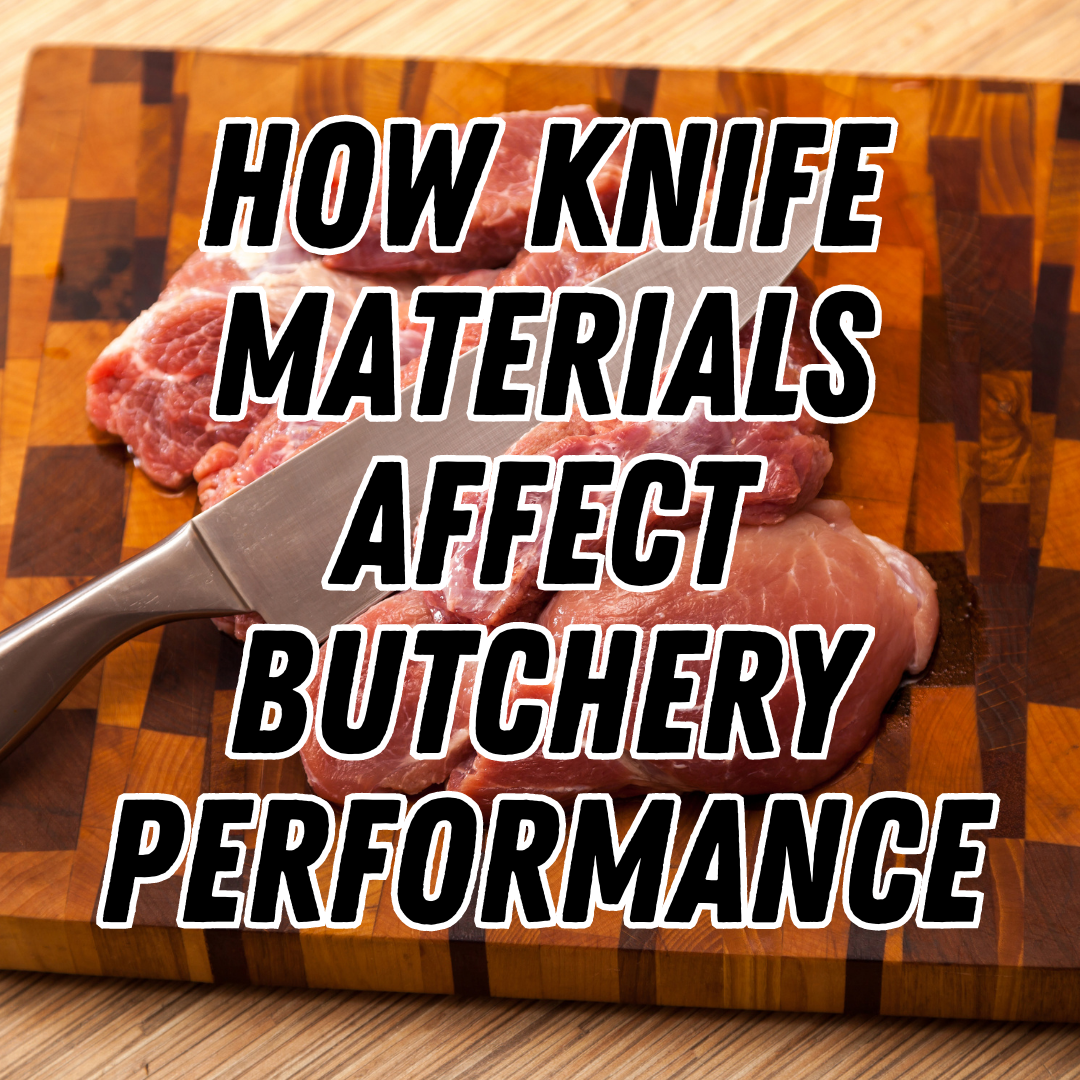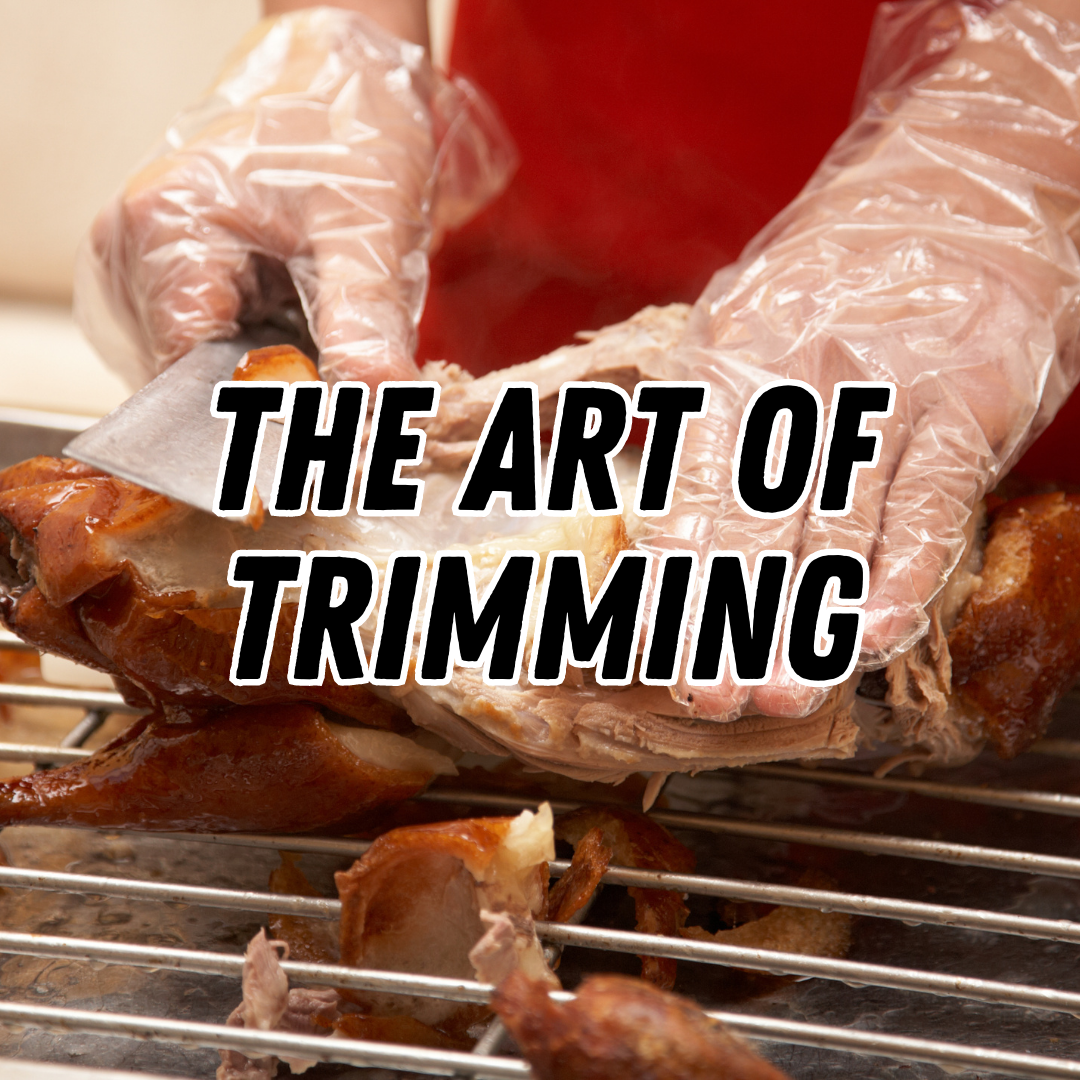Just as a well-marbled steak delights the palate, a well-crafted handle elevates the dining experience.
In this article, we'll look at wood, plastic, and metal handle materials, delving into their distinct characteristics and weighing their merits.
With a keen eye for aesthetics and a taste for comfort, we'll help you navigate the world of handle materials to find the ideal match for your beloved steak knives.
Let's start our epicurean journey together!
Wood Handles for Steak Knives
Wood handles for steak knives offer a distinct blend of natural aesthetics, warmth, and functional qualities, making them a popular choice among knife enthusiasts.
The following section will delve into the benefits of wood handles, discuss popular types of wood used for steak knife handles, and highlight the pros and cons of this material choice.
Benefits of Wood Handles
Natural Aesthetics and Warmth
Wood handles exude a timeless beauty with their natural grains and unique patterns.
Each piece of wood is inherently different, adding a touch of individuality to every knife. The warmth of wood creates an inviting and organic feel, elevating the overall dining experience.
Excellent Grip and Comfort
Wood handles offer a comfortable and ergonomic grip. The natural texture of wood provides a tactile advantage, enhancing control and reducing slippage during use.
The handle's warmth and ability to absorb moisture contribute to a pleasant and secure hold, ensuring a confident cutting experience.
Popular Types of Wood for Steak Knife Handles
Exotic Hardwoods
Exotic hardwoods like rosewood, ebony, and cocobolo are highly sought for their exceptional beauty and durability. These dense woods exhibit rich colours, intricate grain patterns, and excellent resistance to wear and tear, making them ideal for durable steak knife handles.
Stabilised Wood Options
Stabilised wood, such as stabilised burl or splatted wood, undergoes a treatment process that enhances its durability and stability. Stabilisation involves impregnating the wood with resin, resulting in a material that is less susceptible to moisture, warping, and cracking while still showcasing the natural beauty of the wood.
Pros and Cons of Wood Handles
Pros:
- Aesthetically pleasing, with natural warmth and unique grain patterns.
- Excellent grip and comfortable handling for precise cutting.
- Durable and long-lasting, especially with hardwood or stabilized wood options.
Cons:
- Regular maintenance, such as oiling, is required to preserve the wood's condition.
- Susceptible to moisture and temperature changes if not properly cared for.
- It may be more expensive compared to other handle materials.
Steak knives' wood handles balance elegance and functionality, providing visual appeal and a comfortable grip. With proper care, wood handles can last for years, enhancing your dining experience with natural charm and tactile advantages.
Plastic Handles for Steak Knives
Plastic handles are a common choice for steak knives due to their many benefits. This section will examine the strength, water resistance, and variety of colours, and styles offered by plastic handles. We will also review the typical plastics utilised for steak knife handles, such as polypropylene (PP) and high-density polyethylene (HDPE).
Advantages of Plastic Handles
Durability and Water Resistance
Plastic handles are durable, making them highly impact and wear-resistant over time. This quality ensures that plastic handles can withstand the rigors of everyday use, including cutting through tough meats, without losing their structural integrity. Additionally, plastic handles have excellent water resistance, preventing potential damage from exposure to moisture or frequent washing.
Wide Range of Colours and Styles
The range in designs that plastic handles offer is one of their main draws. Plastic is simple to mould into various shapes, allowing for innovative and practical handle designs. Additionally, multiple colours are available in plastic handles, allowing you to match your kitchen's décor or express your style.
Common Types of Plastic Used for Steak Knife Handles
High-Density Polyethylene (HDPE):
HDPE is a robust and lightweight plastic known for its exceptional strength and chemical resistance. It balances flexibility and rigidity well, providing comfortable handling and a secure grip. HDPE handles are often favoured in professional kitchen settings due to their reliability and longevity.
Polypropylene (PP):
PP is another popular plastic choice for steak knife handles. It has excellent heat, chemical, and impact resistance, making it highly durable and long-lasting. PP handles offer a comfortable grip and are commonly found in commercial and residential kitchens.
Pros and Cons of Plastic Handles
Pros:
- Durability and water resistance
- Versatility in colours and styles
- Affordability compared to other handle materials
Cons:
- It may lack the premium feel and weight of other materials
- Limited heat resistance compared to certain handle materials
Metal Handles for Steak Knives
Steak knife handles made of metal have certain attractive and useful qualities. Metal handles, with their sleek and contemporary design, can improve the visual appeal of your steak knives. They radiate sophistication and elegance, making them a popular option for individuals looking for a modern appearance.
The remarkable balance and durability of metal handles are their main benefits. Steak knives with metal handles may sustain demanding duties without losing structural integrity because they are designed to resist the rigors of daily use. The blade's balance is also improved by using metal handles, which give users a secure hold.
Regarding metal handle options, two popular choices are stainless steel and aluminium. Stainless steel handles are renowned for their corrosion resistance, strength, and low maintenance requirements. On the other hand, aluminium handles offer a lightweight design and excellent stability and versatility.
However, it's important to consider the pros and cons of metal handles. While they offer durability and a sleek aesthetic, metal handles can be susceptible to temperature extremes, potentially becoming uncomfortably hot or cold to the touch.
Balancing Aesthetics, Comfort, and Maintenance
The handle material contributes to the knife's appearance and affects the dining experience. To find a balance between aesthetics and comfort, consider these factors:
Personal Preferences and Style: Reflect on your taste and the dining setting. Consider the desired ambiance and the image you want to project.
Ergonomics and Grip Comfort: Prioritise comfortable grip. Look for handles with ergonomic designs that fit well in your hand.
Proper cleaning and maintenance are vital to preserving the handles' longevity and appearance. Follow these tips:
Wood Handles: Avoid excessive moisture, clean with a damp cloth and mild soap, then dry thoroughly. Apply food-grade mineral oil or wax regularly.
Plastic Handles: Check manufacturer guidelines for dishwasher safety. Use mild detergents and avoid harsh chemicals. Handwashing is also an option.
Metal Handles: Use non-abrasive materials for cleaning. Dry immediately to prevent water spots or corrosion. Avoid abrasive cleaners or scrubbers.
Summary
The choice of handle material for steak knives plays a significant role in aesthetics and comfort. Wood handles offer natural beauty and a comfortable grip, while plastic handles provide durability and a variety of styles. On the other hand, metal handles offer a sleek, modern look and exceptional durability.
When making a choice, it's essential to find the right balance between aesthetics and comfort, considering personal preferences and ergonomic factors.
Additionally, proper cleaning and maintenance are crucial for prolonging the lifespan of steak knife handles, ensuring they remain in optimal condition for years.




